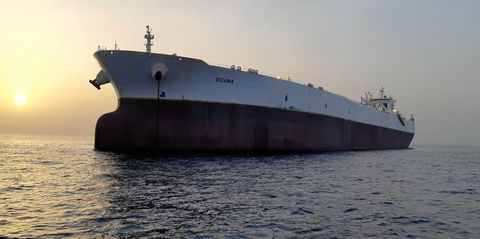The biggest bank in the Nordics saw its shipping loan book shrink in the first quarter of the year.
Nordea’s loans to the shipping sector dropped by 9% to €4.3bn ($4.6bn) from €4.7bn at the end of the fourth quarter.
Shipping loan commitments were stable at around €6.6bn at the end of the first quarter compared with approximately €6.7bn at year-end 2023, including exchange rate effects.
“Whilst the lending and what is reported show a decrease, we are flat on commitment,” Thor-Erik Bech, head of international shipping & offshore at Nordea, told TradeWinds.
The fall in lending can be explained by the booming shipping markets.
“The difference is due to strong markets and lower utilisation of the revolving credit facilities,” Bech added.
The unit in Norway, including both Nordic and international clients, accounted for €3.9bn of the shipping loan book, according to the quarterly report of the Helsinki-based bank.
The lending to the tanker segment (crude, product, chemical) stood at €1.7bn.
Dry cargo loans were €0.9bn and the lending to gas tankers was €0.8bn.
Ro-ro vessels and car carriers loans combined amounted to €0.5bn.
“In large corporates & institutions [division] we continued to actively support our Nordic customers with their investment plans,” chief executive Frank Vang-Jensen said.
Lending grew by 3% from corporate and institutional customers and deposit volumes decreased by 13% year on year.
“In debt capital markets, activity was high and we arranged more than 200 transactions,” Vang-Jensen said.
First quarter total income for the whole bank increased by 6% year on year to €3.1bn, driven by 11% higher net interest income.
Operating profit for the quarter increased by 19% year on year to €1.8bn.
Net loan losses and similar net results amounted to €33m, or 4 basis points — a low level given the challenging economic environment, according to the CEO.
“Nordea’s credit quality remains strong. Our loan portfolio is diversified across sectors and markets and supported by a prudent risk profile,” Vang-Jensen added.
The return on equity was 18.1% in the first quarter.
The bank expects to achieve a return on equity above 15% for the full year of 2024.
The financial outlook for 2025 is unchanged, targeting a return on equity of above 15%.
“Looking ahead, we remain committed to delivering market-leading performance, supported by focused and profitable growth and improved capital efficiency through our well-diversified business model,” Vang-Jensen said.






